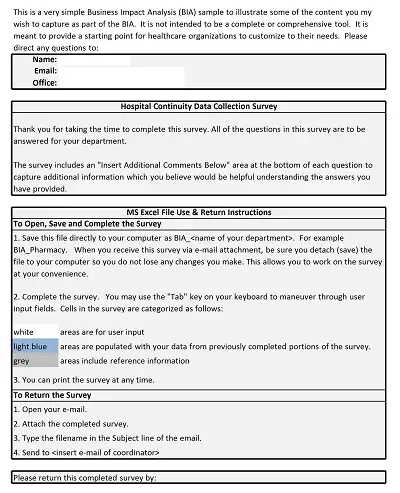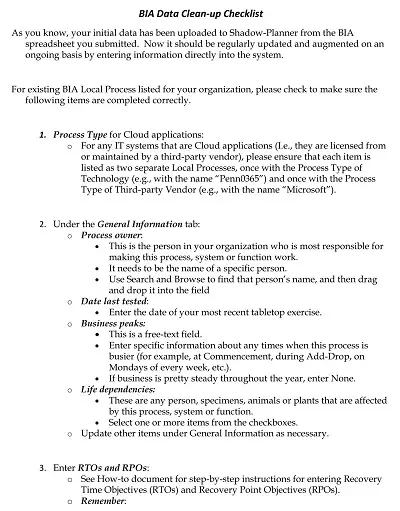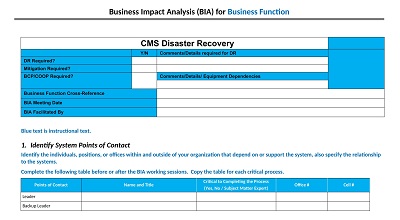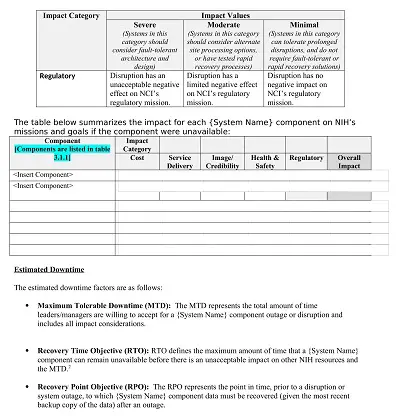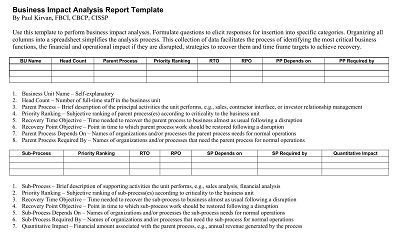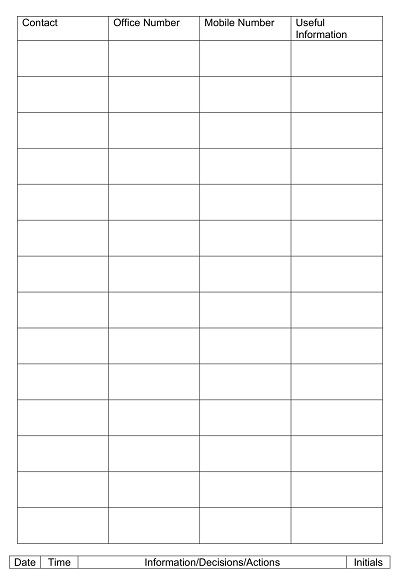36+ Free Simple Business Impact Analysis Templates – PDF, Word
A business impact analysis (BIA) template is a tool that organizations use for reviewing the potential impacts of disruptions to their operations. It helps to identify what assets, processes, and resources need to be protected from unexpected disruptions like natural disasters or cyber-attacks. The BIA is an organized way to research and collect data about risks, impacts, and dependencies on processes.
Table of Contents
Evaluating these risks, helps an organization determine strategies for protecting the organization’s assets and critical business activities. This process ensures that the company can quickly return to normal operations following a disruption incident. The BIA steps provide an effective framework for understanding the likelihoods and consequences of various threats to create preventive measures to minimize potential losses due to disruption events.
Download Free Simple Business Impact Analysis Templates
Importance of BIA for Business Continuity Planning
Business is an ever-evolving landscape and the need for continuity planning has never been greater. Many organizations have put into place Business Impact Analysis (BIA) to assist with this planning. BIA is a crucial tool that is used to assess the potential impact of disruptions to normal business operations.
It helps identify what processes, services, or products are key elements of a business and which need protection from disruption. BIA allows businesses to determine steps needed to maintain critical infrastructure elements in the event of any threats that might arise, as well as design strategies for dealing with those types of threats moving forward. By developing appropriate plans ahead of time, businesses can be prepared for a variety of incidents and mitigate damage quickly and effectively.
Steps involved in conducting a BIA
Conducting a business impact analysis (BIA) is an important part of any business continuity plan. It involves a systematic examination of the operation and activities of an organization to identify the types and levels of impacts that could result if those operations were disrupted by a disaster.
Some of the key steps involved in conducting a BIA include identifying critical functions, processes, and technology, defining objectives and success criteria, gathering input from stakeholders and personnel, evaluating risk within each component, prioritizing risks based on their potential impact, and then measuring the expected cost of disruption. An effective BIA will also incorporate data gathered during testing and ongoing review to ensure accuracy over time. With its comprehensive assessment process, BIA enables organizations to develop strategies for mitigating operational disruptions which can save money in the long run.
Key Benefits of Business Impact Analysis for Organizations
Business Impact Analysis (BIA) is a valuable asset for organizations of any size, as it delivers a comprehensive assessment of the potential effects that an incident may have on their operations. BIA helps to identify weaknesses in the organizational structure and processes, allowing the timely adoption of measures necessary to protect critical business functions and assets.
It ensures that any response to an incident contains all essential elements while allowing teams to prioritize actions based on the degree of impact on operations. Additionally, it allows organizations to anticipate risks and threats, instead of merely reacting to situations. As such, BIA is essential for maintaining business continuity by ensuring any disruption is kept as small as possible.
Crafting a Business Impact Analysis Template for Your Organization
A business impact analysis (BIA) is an essential step in preparing for any type of disaster or disruption. It’s designed to help you identify areas of risk and to prepare a comprehensive recovery plan. Knowing how to create a BIA template can make this process much easier and can help ensure that your organization is ready to respond quickly and effectively if something goes wrong.
Identify Critical Assets and Operations
The first step when creating a BIA template is to identify the critical assets and operations that are essential for your organization’s success. This includes tangible assets like computers, office equipment, and physical facilities as well as intangible assets such as intellectual property, customer data, or proprietary information. You should also consider processes like supply chains, customer service protocols, internal policies, or other operational activities needed to keep the business running.
Assess the Impact of Potential Disruptions
Once you have identified the critical assets and operations, it’s time to assess what would happen if they were disrupted. Consider factors like lost revenue, delays in production or delivery times, decreased customer satisfaction levels, reputational damage, or any other potential impacts on your bottom line. Make sure that you have a clear understanding of how each disruption could affect your business before moving on to the next step.
Create Actionable Mitigation Strategies
Now that you know what could go wrong with your business operations if something unexpected occurs, you can start crafting an actionable mitigation strategy to reduce the risk of these disruptions happening in the first place. Think about ways that you can minimize potential loss from different types of disasters by having backup plans in place or strengthening security measures. Additionally, create plans for responding quickly and efficiently if something does occur so that you can limit downtime and get back up and running as soon as possible after an incident has occurred.


